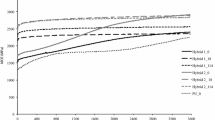13
C NMR evidence is presented confirming that the main decomposition (and recomposition) mechanism of hexamine is not directly due to formaldehyde but rather proceeds through now-identified intermediates, i.e. mainly through the formation of reactive imines rather than methylene bases, possibly also forming a very slight amount of iminomethylene bases. This also confirms that any species with strong real or nominal negative charge under alkaline conditions, be it a tannin, resorcinol or other highly reactive phenols, be it melamine or another highly reactive amine or amide, or an organic or inorganic anion, it is capable of reacting with the intermediate species formed by decomposition (or recomposition) of hexamine far more readily than formaldehyde explaining the capability of wood adhesives formulations based on hexamine to give bonded panels of extremely low formaldehyde emission. If no highly reactive species with strong real or nominal negative charge is present, then decomposition of hexamine proceeds rapidly to formaldehyde formation as reported in previous literature. The elucidation of the hexamine decomposition mechanism, which is presented, and a scanning electron microscopy (SEM) investigation also allowed to advance a reason for the without-curing-formation of ambient temperature stiff gels in tannin/hexamine glue mixes and to propose chemical structures for the ionic coordination linear polymers formed.
13
C NMR-Spektren machten deutlich, daß der hauptsächliche Zersetzungs- und Wiederaufbaumechanismus des Hexamins nicht unmittelbar über Formaldehyd, sondern über jetzt identifizierte Zwischenverbindungen verläuft, d.h. überwiegend über die Bildung von reaktiven Iminen anstatt über Methylenbasen; nur ein sehr geringer Anteil an Iminomethylenbasen kann dabei ebenfalls entstehen. Die Untersuchungen zeigten auch, daß jede Komponente mit starker realer oder nomineller negativer Ladung unter alkalischen Bedingungen in der Lage ist, mit den Zwischenprodukten beim Abbau und Wiederaufbau des Hexamins viel schneller zu reagieren als Formaldehyd. Das gilt sowohl für Tanrin, Resorcin oder andere hochreaktive Phenole, als auch für Melanin oder andere hochreaktive Amine oder Amide, und allgemein für organische oder anorganische Anionen. Dies erklärt die Besonderheit, daß mit Holzklebern unter Hexaminzusatz Platten mit extrem niedriger Formaldehydemission hergestellt werden können. Wenn keine Komponente mit starker negativer Ladung im Harzgemisch vorhanden ist, dann führt der Hexaminabbau rasch zu Formaldehyd wie es bisher in der Literatur beschrieben wurde. Die Aufklärung des Mechanismus des Hexaminabbaus sowie Rasterelektronenmikroskopische Untersuchungen lieferten zudem eine Begründung für die Bildung fester Gele (ohne Aushärtung) bei Umgebungstemperatur. Daraufhin konnte auch eine chemische Struktur für die gebildeten ionischen linearen Polymere vorschlagen werden.
Similar content being viewed by others
Author information
Authors and Affiliations
Rights and permissions
About this article
Cite this article
Pichelin, F., Kamoun, C. & Pizzi, A. Hexamine hardener behaviour: effects on wood glueing, tannin and other wood adhesives. Holz als Roh- und Werkstoff 57, 305–317 (1999). https://doi.org/10.1007/s001070050349
Issue Date:
DOI: https://doi.org/10.1007/s001070050349




